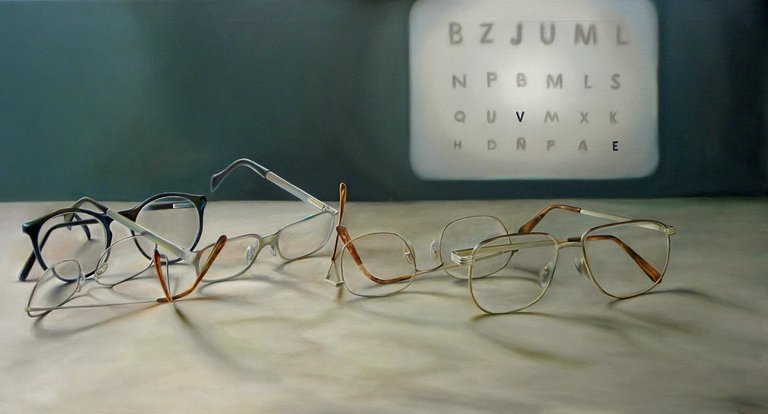Eyes on Screens, Vision at Risk: Rising Myopia Epidemic in the Information Age.
Hi,

(pixabay image)
In the era of the Information Age, where digital screens dominate our daily lives, we find ourselves grappling with the unintended consequences of our modern living. Myopia, commonly known as near-sightedness, has emerged as a significant concern, particularly affecting children who are bearing the brunt of our screen-centric lifestyle. According to The World Health Organization's projections, by the year 2030, a staggering 40% of the global population is anticipated to be near-sighted.
Myopia is a refractive error of the eye that causes distant objects to appear blurry while close objects remain clear. The prevalence of myopia has surged in recent years, with a multitude of factors contributing to its rise. One of the primary culprits is our increasingly indoor-oriented lifestyle. As urbanization takes hold and populations soar, the availability of vast open spaces for children to engage in outdoor activities diminishes. This lack of outdoor playtime and exposure to distant objects contributes significantly to the onset of myopia.
The situation is particularly dire in densely populated cities where families find themselves confined within high-rise apartments, limiting their view of the world beyond. The allure of modern gadgets, especially mobile phones, exacerbates the issue. Children, in particular, are spending prolonged hours glued to screens, engaging in activities that demand intense focus on close-range content. This visual strain is a key contributor to the growing myopia epidemic among the younger generation.
Studies indicate a direct correlation between screen time and the development of myopia in children. Prolonged periods of near work, such as reading or gaming on electronic devices, can lead to an elongation of the eyeball, increasing the risk of myopia. The implications are profound, with potential long-term consequences for eye health.
To counteract the myopia epidemic, it is imperative to recognize the importance of outdoor activities and spending time engaging with distant objects. Outdoor play not only provides a natural environment for physical exercise but also exposes children to a variety of focal distances, promoting healthy visual development. Encouraging breaks from screen time and fostering activities that involve looking into the distance can play a crucial role in preventing and mitigating myopia.
As we navigate the complexities of the Information Age, we must remain vigilant about the impact of our modern lifestyle on our health, particularly our vision. Myopia, on the rise with the proliferation of screens and diminishing outdoor play, demands our attention. By fostering a balance between screen use and outdoor activities, we can strive to mitigate the myopia epidemic and ensure a healthier visual future for the generations to come.
So, take care, stay healthy.
With love from @erica005.
!LADY
View or trade
LOHtokens.@ladiesofhive, you successfully shared 0.1000 LOH with @erica005 and you earned 0.1000 LOH as tips. (13/30 calls)
Use !LADY command to share LOH! More details available in this post.